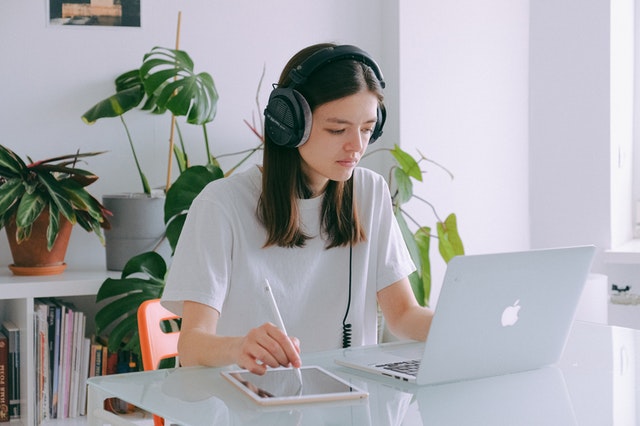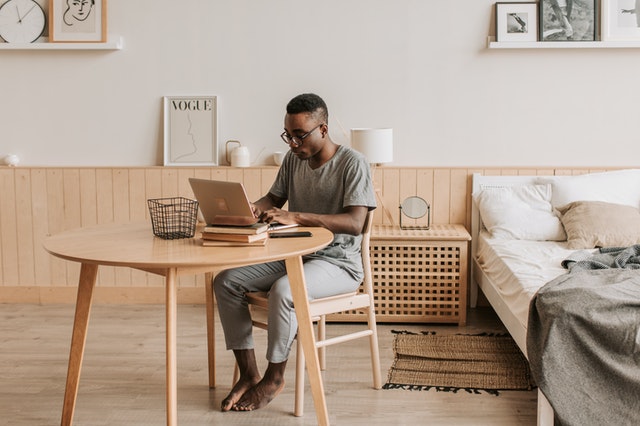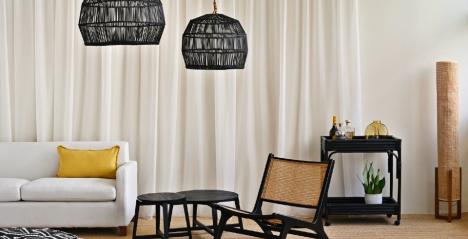Working within the walls of your own home is the dream of almost every office worker. Since this provides many advantages and allows you to significantly save time and money on daily travel on public transport.
When deciding to start a professional activity at home, you need to think in time about where and how to organise a workplace, which, in turn, must meet certain requirements. But, don’t worry. In this article, you’ll find out that designing a home office can be profitable, comfortable and does not require special expenses.
When creating a workplace, it is important to take into account these nuances:
- the workplace should not take up much space. In essence, it always represents a table and an armchair, as well as shelves, drawers and cabinets for storing papers, office supplies and other things;
- in the area reserved exclusively for the home office, you should place only items related directly to your activity and not clutter it with extraneous things;
- the working area should be organised ergonomically, that is, in compliance with the rules for placing objects and equipment in the space for the most convenient use;
- be careful about choosing the right lighting, table height and seating furniture, as they should not cause discomfort during work;
- in order for the room in which you are setting up a place for a home office to look harmonious, try not to go beyond the existing interior, choosing furniture for a workplace using contrasting colours and style.
Now, let’s start.
1. Choose a suitable location

Despite the fact that there is a warm bed with blankets and pillows at home, it is not worth working in it. If possible, try to separate the work area from the living area - this will help to be more organised and not relax too much. This way you will not have the feeling that you are constantly at work. Place your work area closer to the window to allow plenty of natural light during the day.
2. And comfortable furniture
Consider whether you will be able to allocate enough space in the room for a desktop or you will have to rearrange it for this. As a last resort, you can use a dining table or a wide windowsill - but this is not the best idea if you are used to relaxing here or spending time with your family.
To delimit the zones, put a small work table - if you wish, the mini-cabinet can be separated by a screen, rack or curtain. If there is very little space, consider a folding table that attaches to the wall, as well as a folding chair. But you certainly shouldn't work on an uncomfortable and low stool without armrests and backrests - you will get tired quickly due to the heavy load on your back.
3. Check for outlets
A good solution is to place the table next to electrical outlets so that you can always charge all your gadgets or turn on table lighting. But do not despair if the outlet is not nearby - you can always stretch the wires to the table, decorate them and match them to the colour scheme of the interior (or vice versa - highlight with colour and emphasise this).
4. Organise your desktop

If you always have chaos on your table and a lot of unnecessary items, it means that they simply do not have their place. Remove anything that gets in the way of concentration, including items that you won't need for work (it is best to keep in the living area).
Then go through all the items you need and divide them into categories. And for each of them, determine its place. For example, books and manuals can be stored on a rack or shelves, desk drawers and special organisers are suitable for office supplies, it is better to put documentation in folders and hide in a separate drawer.
For reminders and stickers, you can use a cork board or special coasters. Choose a prominent place for them, so you don't forget anything important. And install the wastebasket: it is better to immediately throw out unnecessary pieces of paper and broken pens.
Lifehack: if you have a lot of iron objects like scissors and compasses, hang them on magnetic tape - this way things will definitely not get lost. You can also use a perforated metal panel or hook and loop rails for additional storage of small accessories.
5. Provide good lighting
Even if your mini-office has enough natural light, supplement it with artificial light in case of unexpected evening work or cloudy weather outside the window. A table lamp with soft diffused lighting and the ability to adjust the direction and intensity of light is suitable for this.
When choosing a light bulb, rely on a warm light. It is more pleasing to the eyes and more suitable for evening work - it soothes, relaxes and helps the body prepare for sleep. Cold lighting, on the other hand, can cause insomnia.
6. Create a pleasant atmosphere

We have already said that your desktop should only be associated with work, but this does not mean that space should be empty and uncomfortable. Add a little decor and create a creative atmosphere that you will enjoy being in.
Place a scented candle - with a pacifying or, conversely, invigorating and energising scent. Hang up your favourite photos to remind you of pleasant moments, or display a statuette you brought back from your travels. Place an interesting doorstep mat or a rug under your feet in case you get cold while working.
Make sure that you don’t overdo it - the work atmosphere should remain working.
7. Office as a component of the interior of the room
Very often, the owners of small apartments are simply forced to equip their home office in places that are not intended for the work area. Kitchens, corridors, loggias and balconies are often used at the same time, so it would be better if you decorate the home office area using the same materials, textures and colours that are present in the rest of the environment. Then the workplace will look organic in the interior of any of the rooms.
For example, select drawers and hanging cabinets to match the walls of the living room or kitchen, and the tabletop with documents located against the wall can be a continuation of a wide window sill or a bar counter.
Conclusion
It seems like it's harder to focus when you work at home, but it really depends on your mood and environment. A nice home office will inspire you and make your work easier. As you can see it is not so hard to allocate a few square meters for it and design it as you want. Make sure to follow all the advice above, and you won’t have a single problem in your new home office!













